Paranoia Agent: A Case-Study of Fear and Repression
Paranoia Agent, despite being extremely short, is a very intriguing series to watch. Its disturbing imagery plays upon our innermost fears and the characters we’re introduced to show the various forms fear can take. For those who have never seen Paranoia Agent before, it’s set in cotemporary Japan, beginning with a young woman named Tsukiko Sagi, who is being pressured by her company to create a new character that is just as popular as Maromi, a cartoon dog with pink fur and extremely large eyes. But one evening as she’s walking home, a mysterious boy wearing rollar blades assaults her with a gold baseball bat. While the police are doubtful of her story, they send two detectives Keiichi Ikari and Mitsuhiro Maniwa out to catch this kid, dubbed Lil’ Slugger, who is assaulting other people as well. Unfortunately, the only clue these detectives have to go on is that Lil’ Slugger usually assaults someone who is on the verge of a mental breakdown.
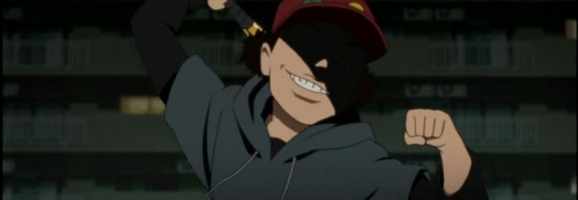
The cause of these breakdowns is unique for every victim Lil’ Slugger attacks (see Fig. 1), but they typically come from some deep-seated psychological problem that is brought to its full-height by fear. For this reason, they are unable to deal with their present circumstances. This inability then causes them to look for something that will alleviate their problems, whether it be something as masochistic as Lil’ Slugger, or deceptively comforting as Maromi. But what it all boils down to is repression, and its consequences.
For example, there is one kid named Taira Yuuichi who is extremely egotistical and conscious about how others view him. While he tries to hide these flaws through his role as class president, his popularity starts to rapidly decline when the students start comparing him to Lil’ Slugger because of his age and what he wears. He even goes to the point of suspecting another kid for spreading the rumors, though he has no actual proof. So by the time Lil’ Slugger knocks him out with the bat, Taira’s fear of losing his status as the popular kid has overwhelmed him completely. But what occurs after he’s hit is very interesting, because despite having a head injury, Taira is no longer stressed, and he doesn’t remember what caused it.
The same thing happens to the other victims, but as the series progresses, we discover that these so-called “cures” are only temporary. This in turn causes the fear to return, and Lil’ Slugger feeds off of these fears until he nearly consumes all of Japan. Now whether he is real or not is debatable, but what the show implies is that he’s a psychological demon created from Tsukiko’s denial when she accidentally killed a puppy, who happened to be named Maromi, when she was a little girl. So when she created the character Maromi many years later, the reppressed guilt began to surge, and then combined with the fear of losing her fame if she couldn’t meet her company’s demands, Lil’ Slugger came back, and she once again used him as an excuse to hide from her troubles. But because she was so famous, the image of Lil’ Slugger spread into the unconsciousness of the millions who heard the police report, who was then summoned by the mentally deranged who needed a form of escape, which included a sleazy reporter, a woman with split-personality disorder, a man whose ideals clash with a low-life reality, a boy who sees the world as a role-playing game, and a mediocre employee who murdered everyone on his production team.

All of these people are so far off the beaten path that fear is like a disease to them, and the only solution is through self-inflicted pain, which temporarly makes them forget it. But not everyone is completely clean, because as the influence of Lil’ Slugger increases, so does the popularity of Maromi. Born out of a disturbing event that Tsukiko tries to forget, Maromi also represents repression, but with a more comforting appeal. While Lil’ Slugger’s demeanor is dark and frightening, Maromi’s is innocent and cuddly (see Fig. 2). Its adorable face makes one forget one’s troubles in an instant, taking them to a happier place that lies outside of real life. However, the characters who experience this are completely out of touch from reality, leading to a false black-and-white interpretation that lingers as long as the complex fears remain reppressed. An example of this occurs when Keiichi, after being laid off the Lil’ Slugger case due to a suspect being murdered under his and Mitsuhiro’s pr0tection, falls into a vivid daydream where he’s back in the days of his prime as a cop while being accompanied by Maromi and a younger version of Tsukiko posing as his daughter, even though he never had one. Eventually, images of his wife start to appear, reminding him of the fear he has for her weak health and their shaky marriage. Through her, he learns of her recent death, which snaps him out of the false reality he’s created under Maromi’s influence.
So as you can see, despite Maromi and Lil’ Slugger’s differences in terms of promoting repression, they are similar in that they were made by the same person, and they both feed on the fears of people to sustain their existence. However, their attempts at reppressing people are thwarted by certain individuals, namely the detectives and eventually Tsukiko, because instead of giving into their fears, they accept them in some form. For Keiichi, it was the love for his wife that gave him the courage to realize the truth about Lil’ Slugger. Meanwhile, Mitsuhiro decided to take the path of the spiritual warrior, allowing him to confront Lil’ Slugger on a physical and psychological level. As for Tsukiko, it was accepting the guilt of her previous actions, and that was what ultimately destroyed her inner demons.
What do you think? Leave a comment.


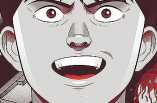

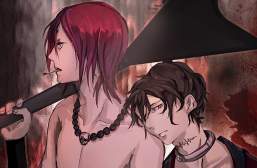
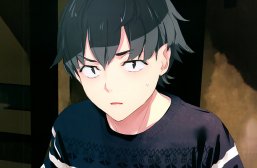
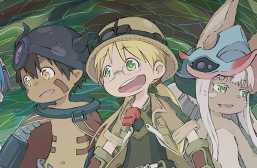
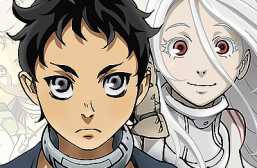
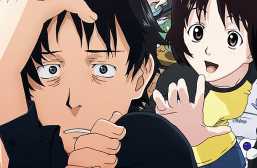
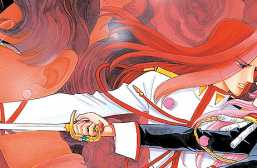
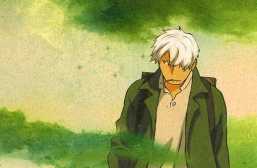
This is a very deep, dark, surreal and symbolic series about evil, fear, illusion, irresponsibility and distance that separates people.
YAY great to see some publicity on this anime. I loved it until episode 7, I adored it at episode 8 and I recognised it as an ultra-masterpiece, while watching the last 3 episodes.
I think this is the 7th time I am watching it all the way through. It’s so rewatchable, plus it’s been awhile since I saw it last.
Anime is like life, with all the boring bits cut out. A little shout out to Hitchcock.
I didn’t see enough of the show to realize what Maromi and Lil slugger are meant to represent but this definitely makes sense. I personally wasn’t a big fan of the art style but I can certainly appreciate an anime that explores characters in such a unique and psychological manner. I enjoyed your article!
I remember watching the dubbed version of this show on Adult Swim a while back, unfortunately I admittedly don’t remember much about it. This article is a really good analysis of the psychological themes of the show, and I’m really inspired to re-watch it! I love how you described the two extremes of the manifestations of fear, it worked well to delineated the narrative and the themes of fear and repression. Thanks for the article!
It’s not like an average anime. Loved it.
Reminds me more of a Kafka novel than anything else.
Paranoia Agent is definetely Lynchian, no doubt about it.
shounen bat is much like Bob in Twin Peaks, and the way Dale Cooper goes about investigating Bob is much like Maniwa’s pursuit of shounen bat.
Also Harumi Chono’s situation is much like that of Betty/Diane in Mulholland Drive.
Liked the depth of the portrayals of psychological illnesses and the devastating effects traumatizing ordeals can have on the human brain.
I appreciate the positive feedback! It really helps!
Episode eleven.
It’s not sad, it’s emotional. That thing charged my blood right up. I love Misae, how she is the only character in the whole series who is in touch with reality and manages to defeat L’il Slugger all by herself.
The whole story of Ikari and Misae is really emotional. The scene where Ikari is confronted by Miase in the bar in his fantasy realm and when he sees the illusion for what it is always makes me well up with joy, sadness, power and hope. All at once.
Also Taeko’s situation is unforgivably tragic, especially so after seeing what a happy child she was and how much she loved her father. Shattering stuff.
So I’m new to Paranoia Agent (and to anime in general) and I’ve just finished watching the first couple of episodes. I think the show is very good but I’m finding it a little difficult to buy into the premise of the show.
Well, I guess I can’t blame you because its a very surreal show where the lines between fantasy and reality are blurred.
This is a really interesting series. I’m only half way through but I can totally see the effects of fear that you illustrate here. Very interesting article. Good work.
Can anyone recommend something for someone like me who loves this series. watched it over 10 times and still can’t get enough of it. I watched Serial Experiments Lain but it was kinda disappointing. Watched all other Satoshi Kon works too.
Its really difficult to say because Satoshi Kon has such a unique style which I personally have not seen in a lot of anime. I suppose it depends what in particular you liked about the series.
Eden of the East – a drama that investigates a particular crime and mystery about the main character. There isn’t any blurring between fantasy and reality, though. Only 13 episodes.
Steins:gate – a sci fi series about time travel. There’s some mix up between different realities… its time travel, after all.
Monster – I have not seen this series myself but it is supposed to be very good. “The story revolves around Kenzō Tenma, a Japanese surgeon living in Germany whose life enters turmoil after getting himself involved with Johan Liebert, one of his former patients who is revealed to be a dangerous psychopath.”
Otherwise a director who has a very similar style to Kon in the sense that he was influenced by European cinema is Mamoru Oshii. He did the Ghost in the Shell movie.
Hope this helps!
Try Tekkonkinkreet, and Mind Game. I think anything else made by that guy are great too.
I haven’t watched much Lynch, but try his stuff and Videodrome.
The Aeon Flux animated series, and maybe MTV’s The Maxx.
Also the Fantastic Planet.
I have heard that Boogiepop Phantom is similar and very good, though I haven’t seen it yet myself and I plan to soon as I get the time.
Moso dairinin is greatness. The ending reminds us of the series’ very first street scene with people going about their daily business. However this time the now well known and cherished characters are featured among the masses.
Alright, I just finished watching the entire series and I feel so strongly about the show, and the fact that there is no solid explanation for it, that I registered to provide my interpretation of the show. This is going to be a long post, and there are still some parts I’m working out so I welcome any comment. However, I feel like I have an accurate take on this anime so help me get this out there!!
It’s an obvious fact that Maromi and ‘Lil Slugger were both physical manifestations of Tsukiko’s wild imagination. However, what EVERY SINGLE post and review I have read on this show seems to be overlooking is the fact that Tsukiko, and all the other characters, are really….
DEAD. -eerie music plays-
Remember episode 8, entitled “Happy Family Planning?” At first I thought this was pointless filler (like episode 10), but in reality this was the most important episode of all. The three main characters in this episode kept trying to kill themselves.. To no avail. The one person who OBVIOUSLY managed to kill himself in the episode, the guy who jumped in front of the train, walked back onto the platform all manner of torn up – even after the girl comments that he was smushed all over the tracks. This leads me to believe that the three main characters in this episode had killed themselves and so they saw the train-tracks guy as a ghost; This is speculation, but I think the two men killed themselves with pills after abandoning the little girl – who must’ve also killed herself because she suddenly appeared in the room (as a ghost?!) right after the guys took the pills. [another possibility is that some people can see ghosts and the guys simply joined her after they died.] The rest of the episode, their suicide attempts fail for one reason or another, and NOBODY CAN SEE THEM. Everyone walks right past them – even when the little girl starts screaming and crying. This evidence leads me to believe that a lot of characters are, in reality, dead throughout the show AND stuck doing the same thing they were doing when they died.
Ultimately, I feel like this entire show is just a convoluted regret that stands as a barrier between Tsukiko and her happiness in the afterlife. You may have a couple questions now: why is Tsukiko dead, what afterlife, and what regret? Let me begin by assuring you that Tsukiko is indeed DEAD throughout the show.
In order to understand this, you have to consider my personal theory of what happens when we die – it kind of involves the multiverse theory. So, the multiverse theory says that there are unfathomable numbers of different parallel universes that exist beyond the scope of our perception. To me, this is one very logical explanation of the afterlife: when we die, we become part of our own “world” or reality. So there would be an unfathomable amount of worlds that coexist, often completely unaware of each other’s existence. If one perceives their personal afterlife to be a good thing, it’s heaven. If we perceive it to be a negative thing, it’s hell. This duality is seen throughout the series; note that the series begins with EVERYONE in Tsukiko’s world talking negatively on the phone. It ends on a very positive note, everyone saying happy things. This somewhat supports the fact that the world, Tsukiko’s “reality,” is affected by her perception and is most likely her afterlife/a parallel universe.
The real evidence that Tsukiko is dead (in episode 12 I think) is when she briefly leaves her world to visit her dad’s, who for some apparently random reason is also the Chief who interrogated her in the beginning. Remember the crazy 2-D people that gave him free beer and smokes? Yeah, that was HIS afterlife, which was empty without his daughter in it (So if the people are closely connected, afterlives can overlap). When he took up the bat and shattered everything, he became part of Tsukiko’s afterlife… an interesting point which I won’t discuss further. Just know that this is enough to prove that there are a variety of different afterlifes described throughout the show – the one that seems most realistic is Tsukiko’s (because she is the main character).
I really don’t think its a stretch to see that Tsukiko is dead, so it surprised me that nobody had considered it. If this is news to you, what will REALLY blow your mind is to consider which characters are really dead, when they died, and how they died….
For now, lets focus on Tsukiko because, as the main character, she’s the easiest to piece together. This is just pure speculation, but I believe Tsukiko’s life went something like this:
Tsukiko gets the puppy and it dies when she is distracted by a shooting pain in her stomach (perhaps her period? not trying to be gross or funny, it just fits with a theme in the show). She blames the death of her puppy on a mysterious assailant wearing in-line skates and wielding a metal bat so her father isn’t mad at her. Her father vows to avenge her loss of innocence and always carries a bat in case he gets the opportunity to avenge her. -something that was said also leads me to believe he kept a GOLD bat because he deep down knew she had lied- From here there are many possibilities.
(For example, one possibility could be that her dad killed the boy who met the description she gave. Yet another could be that the boy goes to jail after being accused of killing the puppy. His life ruined, he kills himself. There are many possibilities, and it is highly likely that all of these variations are implied to have occurred in some version of reality. There simply isn’t enough solid evidence to tell EXACTLY what the truth is. What can definitively take out of it this that her lie caused a schoolboy to die somehow.)
That being said, the evidence provided leads me to assume the most likely explanation to her life is as follows:
Her dad never finds the boy. Tsukiko grows up and becomes successful by making a toy that resembles her puppy, which shows that she is deeply and utterly traumatized by the incident from when she was a kid. Since her success is pinned on the lie her whole life revolves around, she isn’t able to create a new toy design and further aid in the success of her company. So, she deals with her troubles, once again, by blaming it on ‘Lil Slugger – she bashes her own leg apart and continues the lie from her childhood. The resulting chain of events causes a school boy, Makoto Kozuka, to be accused and he kills himself in prison having had his whole life and his innocence taken from him. Her employees catch on (this is why there was that line about the Lil Slugger never having grown up) and one of them gets so frustrated with her that he “accidentally” kills her. This is seen in one of the episodes when her coworker suddenly and violently grabs her by the neck and begins screaming at her.
Go back and watch this part again; just as suddenly as he grabs her, he lets her go… after screaming at her for a good while. Tsukiko leaves the car and just stands there. Her coworker apologizes and sounds almost traumatized. He says “I didn’t mean..” and just trails off. Note that he isn’t even looking at her during this part, rather he is looking at the seat where… Tsukiko’s body is. This means that she is just a ghost at this point; she watches him drive into a telephone pole. Not sure if this is an accident because he is so shaken by having killed her, or if it was purposely done to cover his murder. Could be both. What is certain is this is how Tsukiko died.
Now, here comes the really convoluted part; there is a scene that leads me to believe Tsukiko never really was alive to begin with. This would mean that the timeline I just described would be one version of a life she lived in her afterlife (multiverse theory once again). In episode 11 or 12, The Chief is shown to be Tsukiko’s dad, and her mom is seen having a miscarriage. So, this leads me to believe that Tsukiko never really was alive. Thus, in part, this show is about her becoming reunited with the family she never had (this is the deeply moving part if you think of it: the father was in an empty afterlife without her and he was reunited with his wife and connected with the woman his daughter would have been – part of the reason why Tsukiko is able to have a happy life at the end.)
In reality, the writer wanted to represent the multiverse theory to its fullest: there are so many different realities that have happened for Tsukiko. In one reality she was never born. In another she was born and her dad was a huge part of her life. In yet another, Tsukiko got a boy convicted for killing her puppy. Which one is really real? Well, that’s up for you to decide. Personally, I think Tsukiko was never really born, which is why her dad is depicted as a complete stranger in the beginning and at the end. I’m sure that’s confusing as hell, but you’ll see what I mean if you rewatch the show with the multiverse theory in mind. It explains why certain characters literally appear and disappear from time to time, and it explains why all of a sudden the police chief was her dad. However, for simplicity’s sake, lets assume that Tsukiko did live a life with her dad and the show takes place after she has died in the timeline I laid out.
So who is really alive in this show? In the final few episodes, I don’t think there are any characters left alive. However, it is VERY POSSIBLE that Detective Maniwa is still alive. Yet again, for simplicity’s sake, let’s assume this isn’t true due to the jump in logic in the final episodes.
The end seems totally random, but notice the subtle changes in character dynamics. Note that there is a timeline between some of the characters; Chief meets Tsukiko as his daughter only after Maniwa is shown as the Holy Warrior. So, Maniwa dies and then reaches out to the Chief, who was already dead – asking for his help and prompting Tsukiko to face the truth. The truth is that the Little Slugger is a manifestation of Tsukiko’s guilt; Remember how I said that when people die in the show they hold on to the last thing they were doing? Tsukiko dies remembering her guilt and her lie… that guilt becomes a tangible entity, which transforms into a destructive force throughout the various forms of her afterlife. The slugger covers up the truth because Tsukiko doesn’t know how to handle the raw negativity of it. Maniwa dies seeking the truth and trying to stop the slugger, so he comes into the afterlife as a Holy Warrior.
Maniwa really is taking the place of Lil Slugger as the Holy Warrior, who is honestly GOOD at the beginning of the show. Including his initial assault on Tsukiko, he only appears when people ask for his help and the result is always positive. Tsukiko can’t handle the stress from work, so she falls back to needing his help and he reappears. She gets famous from the resulting media exposure and she doesn’t have to make a new doll (which is why her puppy is ironically seen more and more throughout the show and taking life of its own). Slugger pummels the reporter who is after Tsukiko, and the reporter ends up with the story he needs to pay off his debt. Because of the story that is written, Yuichi is blamed and bullied because of his semblance to the slugger. Yuichi blames the chubby kid, who is attacked by the slugger. Then he wishes to be attacked himself to show everyone he isn’t to blame. So he is. ETC. ETC. ETC.
This shows you that the slugger only appears when he is needed and asked for (in the beginning). The result is generally a good thing. However, it always has a further consequence. This chain of events (butterfly effect) ultimately leads to the slugger being bested by the crooked cop, Masami. This leads to the slugger being thrown in jail and broken down by cops who are convinced he is evil. (The interesting part about this is its really Tsukiko’s dad, the chief, who breaks down the boy – representing the fact that he took up arms against the person who had supposedly killed the dog) Ultimately, these worldly evils cause the slugger to break down and admit to the crimes even though he was honestly doing good. With his will broken, his evil counterpart is able to kill him in jail and begin his evil killing spree. This symbolizes a bunch of things.
First off, the slugger was a lie that Tsukiko came up with both as a kid and as an adult. So the concept here is that a lie will grow and continue to have consequences the longer you let it grow. This is also why they say Maromi is the same as the slugger; her growing fame is a symbol of her growing lies. I feel like this is a representation of Tsukiko’s life; after she once again blames the slugger for a crime, someone is actually arrested and he kills himself in jail. This is where Makoto comes in.
In reality, Makoto was accused of being the Slugger, broken of his childhood innocence, and had killed himself in jail. He is then brought into the afterlife as a Holy Warrior because he dies wondering who he took the fall for (this is why he is on a holy quest to find the source of evil, which is truly Tsukiko). But, Makota is also the ‘Lil Slugger in her afterlife because he died thinking he was due to the aggressive cops. This explains the confusion. He’s both the Lil Slugger AND a Holy Warrior. This is why he is good at first. But, just like his real life played out, Makota is forced to take the blame for all the “crimes” (which were really helping people, except the crooked cop who was too far gone). He once again loses all hope and literally kills himself in her afterlife. Then the slugger is reborn; it takes its true, pure evil form (representing just how cruel the lie had become at that point) and basically becomes the grim reaper. He kills people who want to die, who are about to die, and people who deserve to die (mainly people associated with causing Makota to kill himself).
[Thus, we have the true overarching theme for the show: the loss of childhood innocence that leads to a cycle of hate and revenge. We see this several times, but the main manifestation of this is that Tsukiko’s innocent childhood fantasy became something evil when she brought it back as an adult. The idea is that it was passable for her to lie about something as a kid, but as an adult her lie got someone arrested and killed. Up until the point where Makoto kills himself, her lie was innocent and harmless (even though a poor puppy was killed in the process – but that’s not as serious of a crime as assault or murder). So, the initial manifestation of her lie (Lil Slugger) was good. After that loss of innocence occurs, Lil Slugger actually starts killing people – he’s all bad and he continues to grow (symbolizing that a lie can grow over time).]
My point here, though, is that after the first Holy Warrior dies, someone has to take his place.
That someone is Maniwa. I believe he is represented as a Holy Warrior because he died seeking to uncover the truth to what actually happened. He loses his job pursuing the slugger and comes back at the end of the show to finish him off. This means Maniwa dies trying to uncover the truth. This is why he shows up in her afterlife as the Holy Warrior, where he solves the mystery, shows Tsukiko what really happened, and then reunites her with the family she never had in order to give her a reason to let go of the guilt and shame she felt. Thereby, the evil Lil Slugger is beaten and the world is saved!! Tsukiko then enters a new reality that is entirely positive, and she lives happily ever after in her heaven.
Multiverse theory makes this really convoluted and complicated, and there are tons of themes that I assuredly have missed. However, I guarantee this is the most accurate general interpretation of this show to date. I haven’t read a single review or post that realizes the fact that people are dead in the show and that multiple realities are being represented. This is honestly why its so hard to understand and explain. Ultimately, this was the writer’s intent; its supposed to be overly complex so everyone interprets it in their own way. (This parallel’s the ending where Tsukiko’s perspective molds her reality.) Point being, you’re supposed to figure it out yourself! This means that you have to go back, watch it over, and do research if you really want to understand the story. This is also why Paranoia Agent is now my most favorite anime EVER; you can watch it again and again, always learning something new. It’s graphics are great, it’s chock full of wonderful messages, shows you that there is good in the world if only you perceive it, and has amazing replayability. 10/10 best anime ever. Sorry for the novel, but I hope you learned something new, and I hope I answered your questions in the process.
Keven, you should register and join as a writer here.
I have to note how greatly you put those ideas into words. Every sentence chimes with each other till the end. Going back to the series, I’ve been thinking about watching it for so long. I’m invested enough given the articles that I have read.
I just finished the anime and this article cleared a few doubts of mine, thanks!
Paranoia Agent is a profound psychological anime. It makes its watchers think of characters from a symbolic viewpoint. Clearly, Shônen Bat and Maromi are representative of fear and repression as the article suggests. Thank you for sharing!
Left searching for answers and wanting more.
The “photo bomb” with the three suicides made us feel there was an after life element to this (girls taking selfies unsettled)
Would be grateful for any other tips/leads regarding to the anime.
Thanks for your interpretation
Seven years later !
Ajay
This was a very helpful case study. It was already my second time watching Paranoia Agent and reading this article too. I think the anime can minimize the stigma in interpreting how mental and social illnesses work.